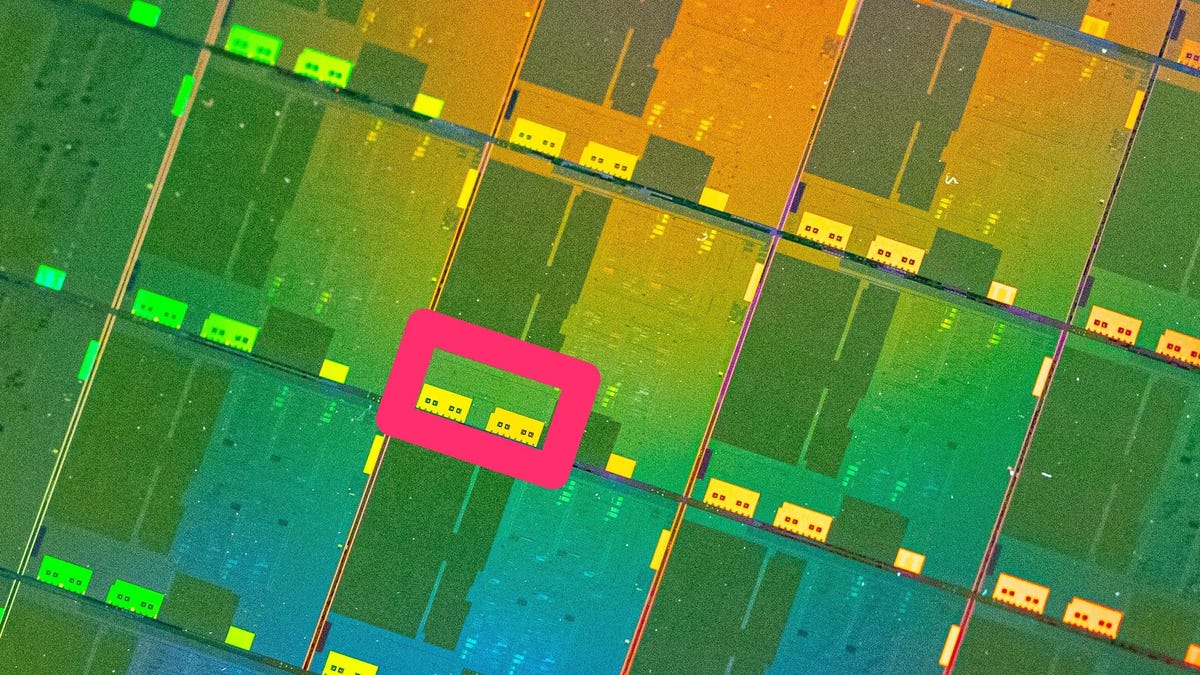 Why You Can Trust CNET
Why You Can Trust CNET Intel's Ice Lake chips are the newest attempt to make Thunderbolt relevant
But USB is good enough for most of us -- and getting better.

Support for high-speed Thunderbolt connections accounts for a sizable fraction of the circuitry on Intel's new 10nm Ice Lake processors.
If you like the high-speed Thunderbolt port for plugging stuff into your PC, there's good news for this year and beyond.
Thunderbolt debuted on MacBook Pro laptops in 2011 as an all-purpose port for monitors, storage systems and other high-end peripherals , and has since spread to Windows machines, too. This holiday season, though, Intel's new Ice Lake processor will make Thunderbolt more common by building support straight into the chip itself instead of relying on separate processors.
The more mainstream alternative, USB, will get better in 2020 with a Thunderbolt technology infusion. But Intel has plans to improve Thunderbolt, too.
"We have a very robust team that continues Thunderbolt development," said Chris Walker, Intel's PC chip chief, in a recent press briefing.
Intel wouldn't say exactly how it hopes to improve Thunderbolt. Speed boosts are an obvious candidate, given Thunderbolt's usefulness in high-end computing.
But fundamentally, it's not clear Thunderbolt will have a new answer to its biggest question: With USB's ubiquity and increasing speeds, will Thunderbolt ever become a truly mainstream technology?
Nope, says Endpoint Technologies analyst Roger Kay.
"This reminds me of IEEE 1394 all over again," Kay said, referring to the connection standard also called FireWire. "For a while, it had a technical advantage, and Apple backed it, but it wasn't standard, and eventually lost to USB." Except for specialty uses, Thunderbolt will "never get traction."
Thunderbolt port power
The Thunderbolt connections on all Macs and some Windows PCs can be used to connect peripherals like monitors, high-speed network adapters, ordinary hard drives and more capacious storage arrays. On laptops , a single Thunderbolt docking station can grant your PC access to a flash memory card reader, power cable, HDMI display, Ethernet network and USB mice and keyboards. Gamers and video editors can use Thunderbolt to plug in an external graphics card that's more powerful than what's built into laptops, too.
Thunderbolt is fast, with the ability to transfer data at 40 gigabits per second. That's swift enough to copy the 2.5-hour Avengers: Infinity War movie -- an 8.4GB file for full HD resolution -- in 1.7 seconds.
As important as its speed is Thunderbolt's ability to juggle multiple types of data, for example retrieving photos from a hard drive without causing any problems with a high-resolution 5K display.
Intel's Thunderbolt is adept at "multiplexing" -- accommodating multiple data streams. USB 4 will get this ability from Thunderbolt in 2020.
Intel has opened up its once very proprietary technology, sharing Thunderbolt specifications freely so others can do things like build controller chips. Such gestures often improve a technology's fortunes, and indeed it's a reason Intel is bullish.
"Processor integration [on Ice Lake chips], combined with the release of the protocol specification, is expected to drive large-scale, mainstream adoption of Thunderbolt 3," Intel said in a statement.
Intel Ice Lake's Thunderbolt boost
Thunderbolt has come a long way. It's now common on higher-end Windows laptops, too, and it shares the same port design as the newer USB-C. The number of PCs shipped with Thunderbolt doubles annually, now with tens of millions sold. The number of Thunderbolt peripherals available doubles at the same rate, with 450 certified products now on the market, Intel said.
Ice Lake brings major help, though the chip is years late because of Intel's manufacturing difficulties. But Ice Lake is real now, with circuitry miniaturization that gave Intel the option to pack more abilities straight onto the chip. And Thunderbolt occupies a lot of chip area.
"In our history, we never went through an integration of this size since we integrated graphics on Sandy Bridge," chips Intel debuted in 2011, said Ophir Edlis, a senior principal engineer, in a May briefing.
Building Thunderbolt into Ice Lake means it'll use less power than today's approach with separate controller chips -- up to 300 milliwatts per port, Edlis said. With four ports, that's 1.2W saved. For comparison, Ice Lake chips will come in configurations that consume 9W, 15W or 28W.
A 300mm silicon wafer covered with hundreds of Intel's new 10nm Ice Lake processors.
Thunderbolt integration also means it's easier for PC makers to put two Thunderbolt ports on both sides of a laptop, Edlis said, and means circuit boards need less wiring.
"We'll see more and more platforms adopting Thunderbolt," Edlis said. "The user experience is going to be much much better."
USB: Thanks for the free help, Thunderbolt
Arguably the biggest beneficiary of Thunderbolt's new openness is its biggest rival, Universal Serial Bus, aka the ubiquitous USB.
USB 4, in the last stages of standardization now and due to arrive in products in late 2020 or so, is incorporating Thunderbolt 3 technology. That'll not only double its maximum speed to 40Gbps but also give it flexibility missing from USB 3, like the ability to intermix time-sensitive video data for monitors with other information. That should also increase the utility of USB hubs and docking stations, too.
Although Thunderbolt devices can offer superior performance, you'll often pay a premium. A Seagate 1TB external USB drive costs $45 on Amazon , for example, but a 1TB Thunderbolt model from Seagate subsidiary LaCie costs $70.
Another big challenge is Thunderbolt's absence on mobile devices like iPads, iPhones and Android phones . We don't plug peripherals into them as commonly as we do with PCs, but they're a steadily increasing presence in our computing lives.
So while there's no doubt Thunderbolt is getting better, USB's improvements mean it'll likely remain more niche than mainstream.

